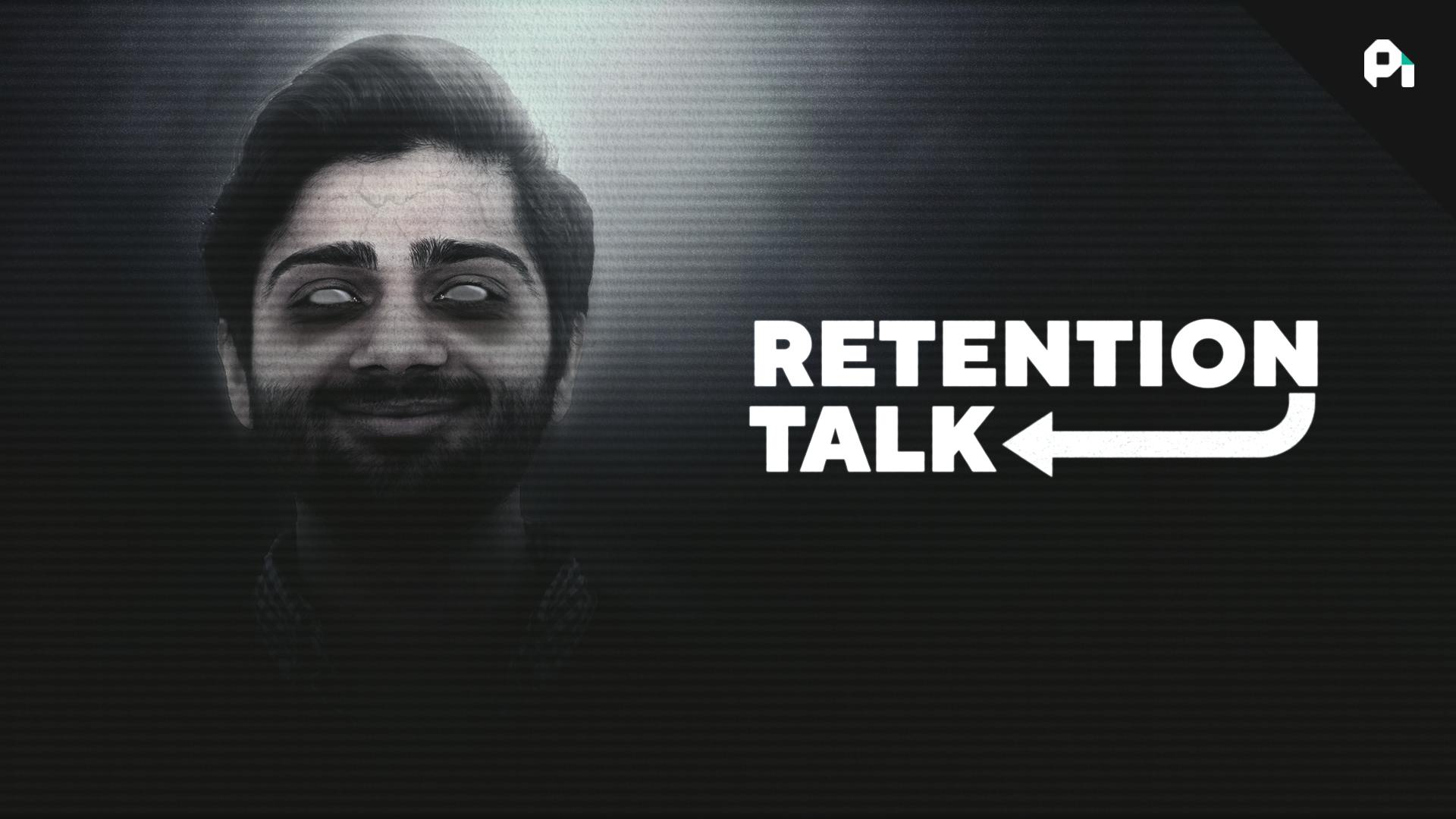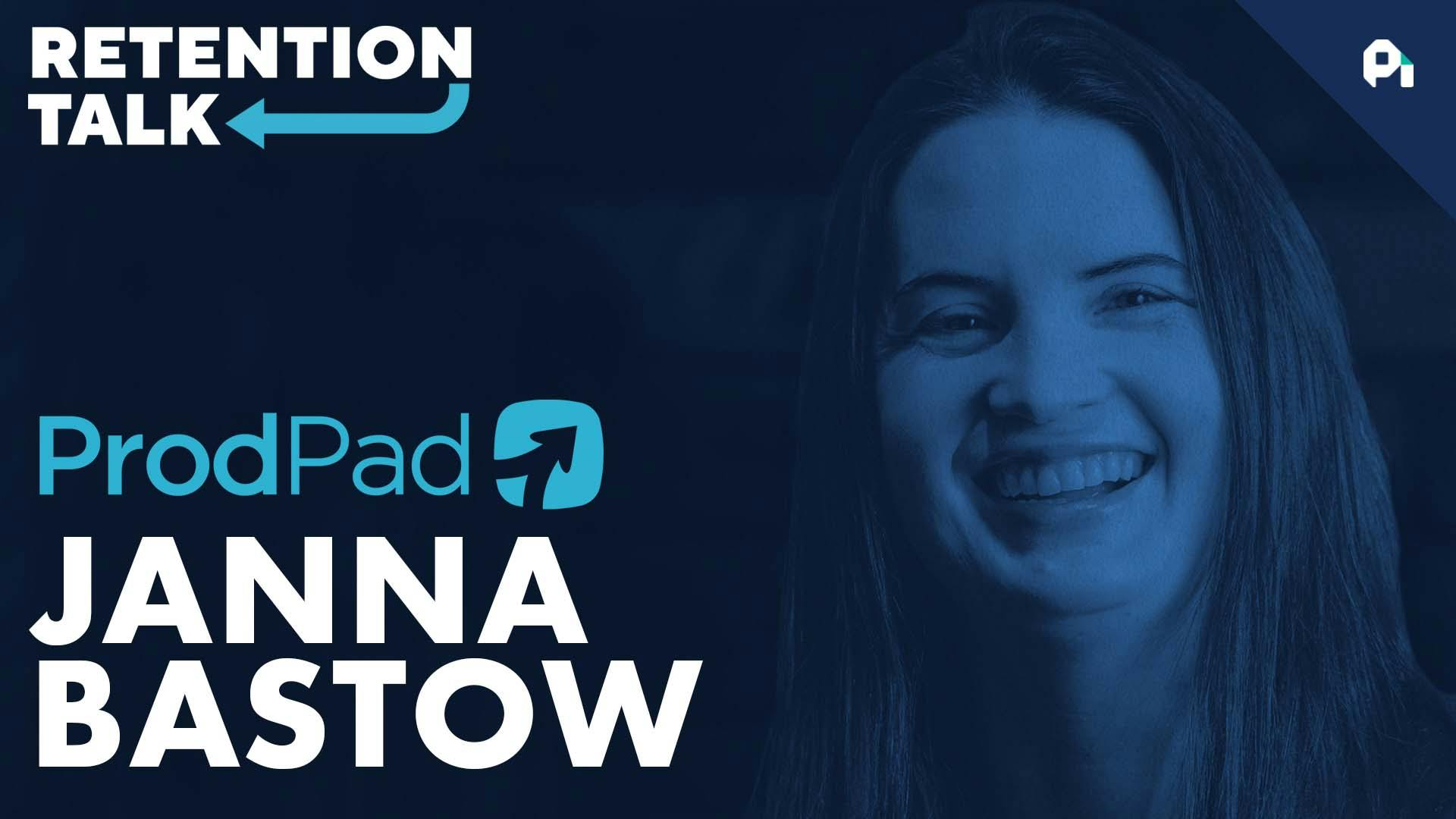
Focusing on second month retention | Winc's Jai Dolwani
This episode might reference ProfitWell and ProfitWell Recur, which following the acquisition by Paddle is now Paddle Studios. Some information may be out of date.
Please message us at studios@paddle.com if you have any questions or comments!
On today's episode of Retention Talk Neel speaks with Jai Dolwani, CMO at Winc. We talk about options to provide when cancelling, second-month retention, and using NPS to understand holes in the customer experience.
Key points discussed in the episode
If there's a solvable problem that we can address then we'll definitely attempt to save them, but if not we want to make the cancellation process as smooth as possible and try not to overdo it.” - Jai Dolwani
Options to provide when cancelling
With wine delivery, Winc often runs into problems with delivery when no one is able to sign for the package which can lead to cancellations. In the cancellation flow they make sure to address this issue by educating customers on alternative options they may not have thought of, such as getting it delivered to a FedEx location or a local Walgreens.
Focusing on second-month retention
At Winc, they use a first-time incentive to acquire customers. Delivering a fantastic product is great, but it's about setting the right expectations and then delivering on those expectations month over month.
Using NPS to understand holes in the customer experience
When Jai first started, he discovered through NPS that there was a big hole in product availability. Despite pandemic struggles, the team was able to rally around getting the number of products that customers were asking for on the site. With CAC increasing year over year, they have been able to drive higher LTV by being on top of the latest wine trends and making sure more SKUs were available to their customers.
Do us a favor?
Part of the way we measure success is by seeing if our content is shareable. If you got value from this episode and write up, we'd appreciate a share on Twitter or LinkedIn.
00:00:00:01 - 00:00:22:09
Unknown
We use amps in a couple of different ways. Number one is obviously to understand where the biggest holes are in our customer experience. When I first joined Wynk around this time last year, it was very, very clear what our biggest goal was, and that was product availability. And this was our first insight into understanding that customers were not particularly happy with their selection of products.
00:00:22:10 - 00:00:42:05
Unknown
And it was in the peak of the pandemic. We were struggling to catch up supply to demand, but we were able to rally our entire team around getting the number of products that our customers were asking for on the site and obviously and wine. That takes a little bit of time. But because we were able to get that insight early and work towards it now, we're in a fantastic spot when it comes to that.
00:00:42:16 - 00:01:11:17
Unknown
Welcome to Retention Talk. I'm Neal Desai, and we're talking to the best minds in the world of product and customer success to bring you actionable strategies on reducing churn and boosting retention. This week we're talking to Jay, the VP of Growth at WINC. In this episode, we talk about options to provide your customers when they're canceling. Focusing on the second month retention, I pay close attention to how WYNK uses NPS scores to inform their roadmap Thank you.
00:01:12:00 - 00:01:29:06
Unknown
Thank you so much for being with us here today. Know, I'm looking forward to learning more about your role and how you drive retention with the team over there. So I'd love to just get a quick background, you know, into How'd you end up here? What are you working on these days? Yeah, definitely. So definitely started my career as a generalist.
00:01:29:06 - 00:01:51:23
Unknown
I started out doing tech strategy consulting for a couple of years. I got into the startup world at BRD, where you know, started on the strategic operations team, again, a generalist, and really moved into launching some of our new ventures, the first being a monthly rentals product. And that was kind of my first foray into customer retention. But I really focus in that area.
00:01:51:23 - 00:02:10:17
Unknown
When I went to Fair Dot com, which is a vehicle subscription app and they had an offering with Uber where they would rent out cars to Uber drivers on a weekly basis. And I led the retention program there. So that was kind of my first time leading an end and retention program really focused on retaining drivers in their vehicles.
00:02:11:01 - 00:02:35:20
Unknown
And from there I found Wynk, which was the first time that I was exposed to the direct to consumer e-com world. I originally joined as director of customer experience, overseeing all of our retention touchpoints across lifecycle marketing, customer support as well as the Wacom digital product experience. And now I've moved into the VP of Growth role, where I oversee the panel for the direct to consumer business.
00:02:36:03 - 00:02:57:21
Unknown
I performance marketing as well as our customer retention efforts. Awesome. Well, quite, yeah. Quite the journey. I'm always fascinated by how folks end up working on retention and growth for e-comm brands, and I love like the evolution of your journey and ultimately how you've narrowed in on on this specific challenge. So obviously the last couple of years have been insane for ecommerce subscription, ecommerce.
00:02:58:06 - 00:03:21:23
Unknown
Tell me more about how you guys think like of the subscription element of like, right? How do you guys think about transactional revenue versus subscription revenue? Is that the focus We'd love to learn a little bit more about how you guys think about that. Yeah. Wacom is 100% subscription today, so when we acquire customers, it's typically through a slightly discounted first order incentive and those customers are acquired directly into the subscription program.
00:03:22:07 - 00:03:47:10
Unknown
And the way in which the subscription work is actually a little bit unique There's a little bit of added flexibility there. We don't operate on your typical auto ship or subscribe and see if model. We actually add credits to members accounts every month and they can then go on our digital product browser curated recommendations or an entire wine shelf to order on their own schedule so they can either order on a monthly bi monthly quarterly basis, totally up to them.
00:03:47:20 - 00:04:09:04
Unknown
Credits roll over and never expire, and we're 100% subscription product because one of the areas where we really shine for our customer base at least, is they're a good portion of our customers that come to us for taking the guesswork out of buying wine. Our interactive quiz experience really gets you into a first box based on your flavor profile as well as things that you like to do.
00:04:09:04 - 00:04:36:20
Unknown
Foods that you like to eat will provide wines that parallel with those, and then throughout the entire customer experience, as you order wines rather than reorder them, we're able to curate recommendations from our portfolio based on your taste preferences. And over time, those recommendations get better and allows customers to not only experience our entire portfolio of wines, but also get, if they want, curated recommendations and kind of take that guesswork out of out of buying the product.
00:04:37:04 - 00:04:56:21
Unknown
Now, since we do design and produce all of our own brands, we do have some ala carte e-commerce outside of Lincoln. One of our brands called The Wonderful Wine Company has its own olive cart side and its own experience. And we do that when we feel like a brand has a unique and large enough potential to warrant its own end and experience.
00:04:56:21 - 00:05:18:20
Unknown
And the wonderful wine company is a great example of that. So we're starting a little bit of olive cart e-commerce, but that's very brand specific and outside of the Wacom ecosystem particularly. Got it. Got it. Okay. That's that's fascinating. I didn't realize you guys had like the credit model. It almost makes you think of, you know, how audible does, you know, weekly or rather monthly book credits.
00:05:18:20 - 00:05:40:04
Unknown
So that's really interesting. And I think one thing I like that I think about is coffee and wine or two beverages that are extremely personal and have deep connections to your lifestyle. Right. And so the fact that users have to sort of proactively engage with your product and and pick out selections and take quizzes and whatnot, I think is probably a big way in which you guys drive customer engagement and, you know, ultimately retention.
00:05:40:04 - 00:06:12:04
Unknown
The shopping experience that I'm come is a huge area of focus when it comes to retention. Right. We want the experience to be significantly better than going into a grocery store and having to peruse a shelf of of hundreds of wines where you're probably just speaking based off of that label and the price. So we want to provide a little bit more of a curated, frictionless experience for people to enjoy wine and really have a connection with the next generation of consumers who may or may be not as pedantic when it comes to wine selections and wine tastes.
00:06:12:11 - 00:06:31:05
Unknown
Another advantage to the credit space model is because of regulation in the United States, you actually have to be home to sign for any alcohol delivery. So for people with busy work life schedules, travel schedules becomes really difficult to have wine shipped on a set schedule. So this allows for a little bit more flexibility when it comes to delivery timing as well.
00:06:31:05 - 00:06:51:20
Unknown
And someone actually being available for that shipment. Got it. That makes makes a ton of sense. So when I think about retention, right, there seems to be a couple sort of buckets one is strategic, you know, product driven components to your experience that that ultimately focus on, you know, persona is making sure you're delivering a great product so on and so forth.
00:06:51:20 - 00:07:07:21
Unknown
And and then there's a bucket of like a lot of mechanical pieces that that I'm sure that you were, you know, driving in your role as head of six and even growth now. So I have a couple of questions around like the mechanical pieces around what happens when a customer cancels, like what does that look like, you know, from a product perspective.
00:07:07:21 - 00:07:35:09
Unknown
But then even how how do you guys think about that internally? Yes. So I mean, the customer cancelation flow goes through our team live chat, Facebook, SMS, email, multitude of channels in which a customer can cancel and what we first try to do is really evaluate why that customer's canceling. There's a couple of components of ways that they may not be familiar with, such as the ability to skip a month, the ability to move to, you know, credits on a bi monthly or quarterly basis.
00:07:35:14 - 00:07:55:07
Unknown
Or perhaps they're having issues with delivery, which is a big chunk of cancelation and you know, we provide options like holding at a FedEx location or your local Walgreens. So we really try to understand why that customer's canceling and attempt to save at that point. You know, if there's a solvable problem that that we can address, then we'll definitely attempt to save that.
00:07:55:07 - 00:08:14:04
Unknown
But if not, we want to make the cancelation experience as smooth as possible. And not try to overdo it then because a lot of our customers would cancel. Maybe, you know, maybe they're pregnant or maybe they're moving back, end up coming back to us. So we want to make that a frictionless experience and then, you know, over time, try to try to win them back through through CRM efforts.
00:08:14:08 - 00:08:35:20
Unknown
Got it. That makes that makes a ton of sense. And I think in talking to a lot of e-commerce brands these days, like there's been a shift in how the industry has thought about saving folks at that point in the user journey, because I think five years ago it was a nightmare to cancel products, right? Like you'd have to jump through a bunch of hoops call people, right in, etc. And I think starting from a place of like really trying to understand why I'm curious.
00:08:35:20 - 00:08:54:03
Unknown
So the point around like deliveries being hard is an interesting one. Have there been other things that the team has learned from talking to folks at that stage in the journey that have contributed to product development? Yeah, I mean, a lot of this has to do with integrations with delivery providers, right? So there's a little bit of a limitation there.
00:08:54:09 - 00:09:21:12
Unknown
But from a product development perspective, learning that, you know, customers being home to to sign free delivery is difficult and allowing through the product itself to be able to enter in your nearest FedEx location for a whole there or provide additional alternatives just within our digital product has been a huge left for us. Another thing that we do is through our checkout flow, we encourage if you're not going to be home send it to a place of business where there's always someone to sign for it.
00:09:21:12 - 00:09:41:17
Unknown
So there's just small tweaks we made in the digital product to help improve the delivery experience for a future state. One thing that I would love to see, and this is, you know, parcel reliance and delivery providers is the ability for our customers to select specific days and times directly through our digital product. I think would make for optimal digital experience when it comes to when it comes to alcohol delivery.
00:09:41:21 - 00:10:03:05
Unknown
Got it. That makes sense. And just mechanically, I'm curious, are you guys using something like Recharge or Shopify for managing sort of the mechanics of all of this? Yeah, great question. So Rank is actually ten years old this year. So when it comes to subscription commerce, recharge Shopify as we know it today didn't exist, and especially with the capabilities and flexibility that's there now.
00:10:03:05 - 00:10:32:09
Unknown
So our platform is actually entirely homegrown from everything backend to payments to subscription management. CMS entire platform is is homegrown, which allows for a lot of flexibility. But there are platforms out there like Shopify that do provide best in class experiences for brands and companies that want to have that out of the box and maybe need a little bit less flexibility, which is why we're starting to put some of our all the brands like Wonderful Wine Company on platforms like Shopify.
00:10:32:09 - 00:10:48:13
Unknown
And eventually when we add subscription to that platform, we'll do it via our Recharger or similar app. That makes sense. Yeah. Wow. I didn't realize time just flies. I mean, I've seen ads for you guys all over the place, and definitely when I think of line subscriptions, you guys are the first thing that comes to mind. But I didn't realize I'd been ten years already.
00:10:48:13 - 00:11:17:08
Unknown
Yeah, I mean, Wynk originally started off at Club W, so a different name and then I believe around 20, 17 pivoted to Wynk. That was around the same time we actually started building our own products and brands instead of just being a distributor for someone else's products. And that's really the core to our strategy now and who we're trying to become see ourselves as a modern winery, a modern beverage portfolio with the comp set really being beverage giants like Constellation or Diageo and less so.
00:11:17:09 - 00:11:36:19
Unknown
Are there wine subscriptions that purely serve as a distribution platform? Sure. No, that that makes sense. There's ultimately and this varies across different companies that I've talked to, like who owns a retention rate because it seems like there's a growth teams, the team. I'm sure you guys collaborate all the time, like internally, right? Who ultimately owns that number, if it's a single person.
00:11:36:19 - 00:11:57:07
Unknown
And and walk me through, like how it's measured, how often who looks at it, so on and so forth. Yeah. So I mean, all of these functions set under the growth organization, which I lead. So it's all really under one organization. And I'm glad you brought that up because right now I'm responsible for customer retention, but we're actually hiring for a director of retention.
00:11:57:07 - 00:12:16:08
Unknown
So many of you guys out there know someone definitely sent them across. But I think, you know, it's really important that it lies within a single organization, especially within when it comes to performance marketing, because at the core of retention is the expectations that you set when a customer is acquired and that is really at the end of the day, what's going to drive retention.
00:12:16:08 - 00:12:40:17
Unknown
Obviously, you know, delivering a fantastic product is great, but it's about setting the right expectations and then delivering on those expectations. So the metrics that we look at when it comes to retention, we focus very closely on that second one, right? So we acquire customers through a first time incentive and then we really look at retention in that second month and LTV as of that second month in order to gauge future cohort performance.
00:12:40:17 - 00:13:09:12
Unknown
So that first product experience that first drip is really telling did we deliver on the expectations that we set when we acquired that customer? So we focus very heavily on that and when it comes to, you know, the entire customer journey and the entire customer experience, and I know there's a little bit of hate around this metric right now, but I actually really like NPS partially because, you know, there's a lot of companies out there that, you know, adjust timing when it comes to that, the way in which they ask questions to kind of game it.
00:13:09:12 - 00:13:33:16
Unknown
But, you know, we, we ask NPS and a very standardized way and we've actually seen that there's a very high correlation between our promoters and customers who, one, have the highest LTV and customers that to refer us the most often. And it's not no longer a lagging indicator. Right? If you want to look at six, 12, 18 month LTV, those are lagging indicators that take time to look at.
00:13:33:16 - 00:14:01:11
Unknown
But NPS is a great predictor, at least for us, of where LTV will lie in the future. So that's another metric that we look closely at when evaluating the entire customer experience, but really, really focus on setting the right expectations and delivering on those. So orienting the team around those second month metrics that I mentioned. Got it. That's super helpful, Matt, because I think to your point, a lot of e-commerce brands leverage your first month's discount to a promotion almost like, you know, lower that activation energy for conversion.
00:14:01:11 - 00:14:21:10
Unknown
But obviously that goes up at that point. And so segmenting out cohort like month two and onwards, I think is a much more accurate reflection of like who your real customers are. And it's funny, you mentioned like Hater and NPS because I think it's actually quite useful at the actual customer level. Like I don't know if the overall composite score is that relevant.
00:14:21:10 - 00:14:38:15
Unknown
Right, even in SAS, but I think at the individual customer level, it is some indication of, you know, how they see your relationship with you. And so if you guys are seeing, you know, correlations and or a particular segment with, you know, higher referrals or extended LTV with higher NPS, I think I think that really matters. And so that's interesting.
00:14:38:15 - 00:14:57:03
Unknown
Are there targeted offers or feedback loops or other things by NPS or you know, it sounds like that's something you guys take a look at internally. So curious if you guys do anything more than just use it as an input. We use NPS in a couple of different ways. Number one is obviously to understand where the biggest holes are in our customer experience.
00:14:57:03 - 00:15:26:19
Unknown
When I first joined Wynk around this time last year, it was very, very clear what our biggest goal was and that was product availability. And NPS was our first insight into understanding that customers were not particularly happy with their selection of products, and it was in the peak of the pandemic. We were struggling to catch up supply to demand, but we were able to rally our entire team around getting the number of products that are that our customers were asking for on the site and obviously and wine.
00:15:26:19 - 00:15:47:19
Unknown
That takes a little bit of time. But because where we were able to get that insight early and work towards it, now, we're in a fantastic spot when it comes to that. And then when it comes to the feedback loop around NPS, of course, any customer who is either a passive or a detractor and tells us why they're having a poor experience, we reach out to them, we try to rectify that immediately.
00:15:48:00 - 00:16:15:13
Unknown
And so we really want to make sure that we're addressing customer issues and if they're frustrated about something, may not create a support ticket, right? They may just send an important NPS response. So we address those customer complaints immediately, and then we surface those insights. Our case manager surfaces those insights to myself, our brand team, our lifecycle communications team, and our performance marketing team to make sure that we're aligned across channels, setting the right expectations and delivering the experience that we want to deliver.
00:16:15:14 - 00:16:35:04
Unknown
Got it. That's super helpful. Curious to hear like, what's what's next for a week? Like, as you think about it, seems like you guys have a pretty sophisticated framework around how you guys think about retention. And obviously there's there's plenty of room for improvement for, for everyone. But like what's what's something that you're looking forward to in terms of whether it's improving a certain metric or improving a part of the experience.
00:16:35:04 - 00:17:09:03
Unknown
Like, what's that next challenge for you and your team? Yeah, so the last six months it was that product availability. And I think the next six months it's going to be building a best in class shopping experience. So right now, we're still at a point, or at least I'm sort a point where we're really focusing on macro value for a cost when it comes to customer retention ongoing and less so specific tactics that specific points in the customer journey and CRM, we do do all of that, but definitely feels like the biggest area of opportunity is just continuing to reinforce and improve the value for cost proposition.
00:17:09:03 - 00:17:31:09
Unknown
And we want to do that through two ways. One is obviously having best in class products and brands available on the site and too is having an amazing digital experience. So the focus moving forward is on that digital experience and really creating a shopping experience that's significantly better than you can get elsewhere. In e-commerce as well as our grocery store shelves.
00:17:31:09 - 00:17:59:08
Unknown
And we're really able to do that through our investment in data science, analytics, engineering and creative functions. And using all of the data that we've gathered to analyze nine, ten years to really drive on site personalization curated recommendations. So we're really focusing on the end intense shopping experience moving forward. We just launched our brand new what we call wine shelf and shopping experience and are starting to test it into something completely different.
00:17:59:15 - 00:18:23:03
Unknown
So focus moving forward is definitely creating a best in class shopping experience, leveraging not only our team but the data that we've gathered over the last ten years to provide that. Got it, love. And then now that's, that's super cool. And I'm sure there's an interesting data play there too with just like understanding consumer preferences around wine selection and, and obviously, you know, a lot of product possibilities from there as well.
00:18:23:11 - 00:18:46:09
Unknown
As you reflect back on your time here, like what's something you're really proud of having accomplished at Adweek, you know, to focus on the retention side. I'll reemphasize the early insight around product availability. It is not easy for a company, especially a winery, to go from 30 SKUs to almost 100 SKUs in the span of a few months.
00:18:46:20 - 00:19:12:22
Unknown
And from initial insight to rallying the team to seeing amazing metrics as a result of that over 25% improvement in average order value Stronger LCR. Stronger LTV is something that I'm really proud of because that allows us to have the right LTV and margin dynamics to then reinvest in customer acquisition and growth, knowing that we're going to get payback quicker than ever before.
00:19:12:22 - 00:19:42:04
Unknown
So I mean, not only has it been amazing for the customer experience, but it's allowed us to scale. And without having that early insight and pushing to invest now a lot of money in terms of building out our product portfolio we wouldn't be there. So if there's any single thing that I can point to, it's really getting the right SKU availability and assortment on this site that has really changed the dynamics of the business and the fundamentals by which we operate, and especially at a time like today where you have rising media costs.
00:19:42:04 - 00:20:08:05
Unknown
Facebook just reported earnings. 47% increase in the cost of serving add year over year cost to acquire a customer continues to get more expensive. So you have to be able to drive more LTV and value. And that's been the key way by which we've been able to do that over the last 12 months. That's incredibly insightful. I mean, I think to your point, right, especially in a, in the subscription business like you live and die by LTV because to your point, the payback period might be months on end.
00:20:08:05 - 00:20:27:00
Unknown
Right? And so anything you can do to to really ensure positive retention, I think it just has tremendous compounding effect. So this has been super helpful. I know we're coming up on time here. So if people want to learn more about you or WINC, how can they find you? Yeah, absolutely. You can join my dozens of followers on Twitter at Jade online or connect with me on LinkedIn.
00:20:27:09 - 00:20:43:10
Unknown
And if you're interested in try out WINC, go to CNN.com, get your first bottles for 29 95 and let me know how it is. Love to hear feedback from our customers and continue to improve the experience. Awesome. A.J., thanks again for the time and this has been super helpful. Appreciate you being on the show. Thanks so much, Neal.
00:20:43:10 - 00:20:44:06
Unknown
Thanks for having me on.
00:20:49:05 - 00:21:12:03
Unknown
A huge shout out to Jay for lending their time to the podcast today. With their help, we've developed they've really strong understanding in how they've been able to drive retention over at WINK. To recap, we talked about different options that you can provide your customers when they're canceling with wine delivery WYNK often runs into problem with delivery when no one is able to sign for the package, which can lead to frustration and cancelations in the cancelation flow.
00:21:12:03 - 00:21:32:23
Unknown
They make sure to address this issue by educating customers on alternative options that they may not have thought of, such as getting it delivered to a FedEx location or a local Walgreens. Second, focusing on month two retention at WINC, they use a first time incentive to acquire customers. Delivering a fantastic product is great, but it's all about setting the right expectations.
00:21:32:23 - 00:21:54:21
Unknown
And then delivering on those expectations every single month. Lastly, how to use NPS to understand holes in the customer experience? When J4 started, he discovered through NPS that there was a big hole in product availability. Despite the pandemic struggles, the team was able to rally around getting the number of products that customers were asking for back on the site with customer acquisition costs increasing year over year.
00:21:54:22 - 00:22:11:02
Unknown
They were able to drive higher lifetime value by being on top of the latest wine trends and making sure that more SKUs were available to their customers. Thanks for listening to this week's episode of Retention Talk. Don't forget to subscribe at Retention Talk RT.com. And if you want to help spread the word. Tag me on Twitter and Neil the side.
00:22:11:02 - 00:22:27:11
Unknown
23 and let's dish on today's episode. Please give us a five star review on the podcast platform with your choice and let your friends know as well. And if you know a great guest, send me a message and Neil a proper welcome. This has been a profitable over Coeur production, the largest, the fastest growing media network dedicated to the world of subscriptions
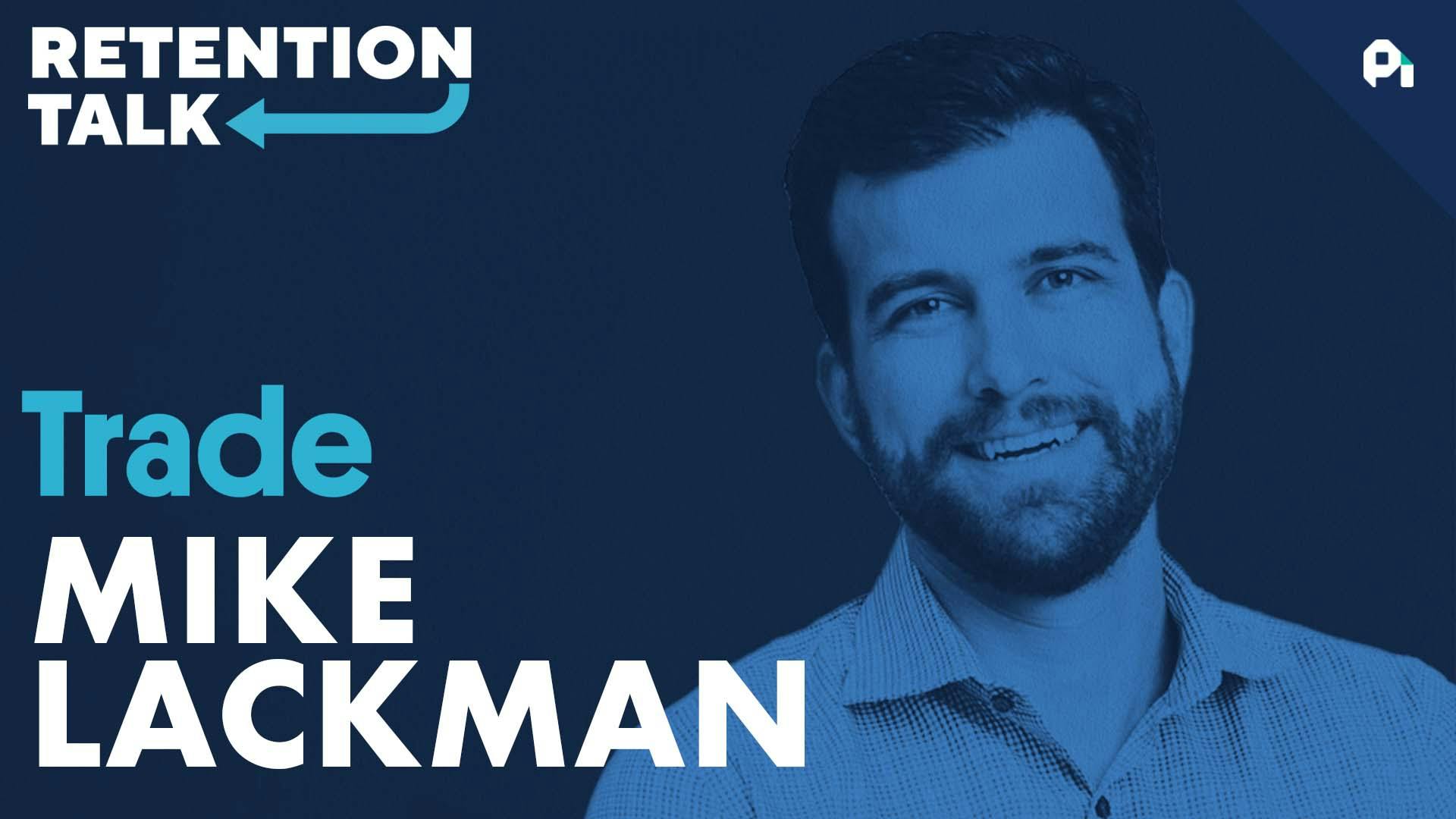
Retaining customers one bag at a time | Trade Coffee's Mike Lackman
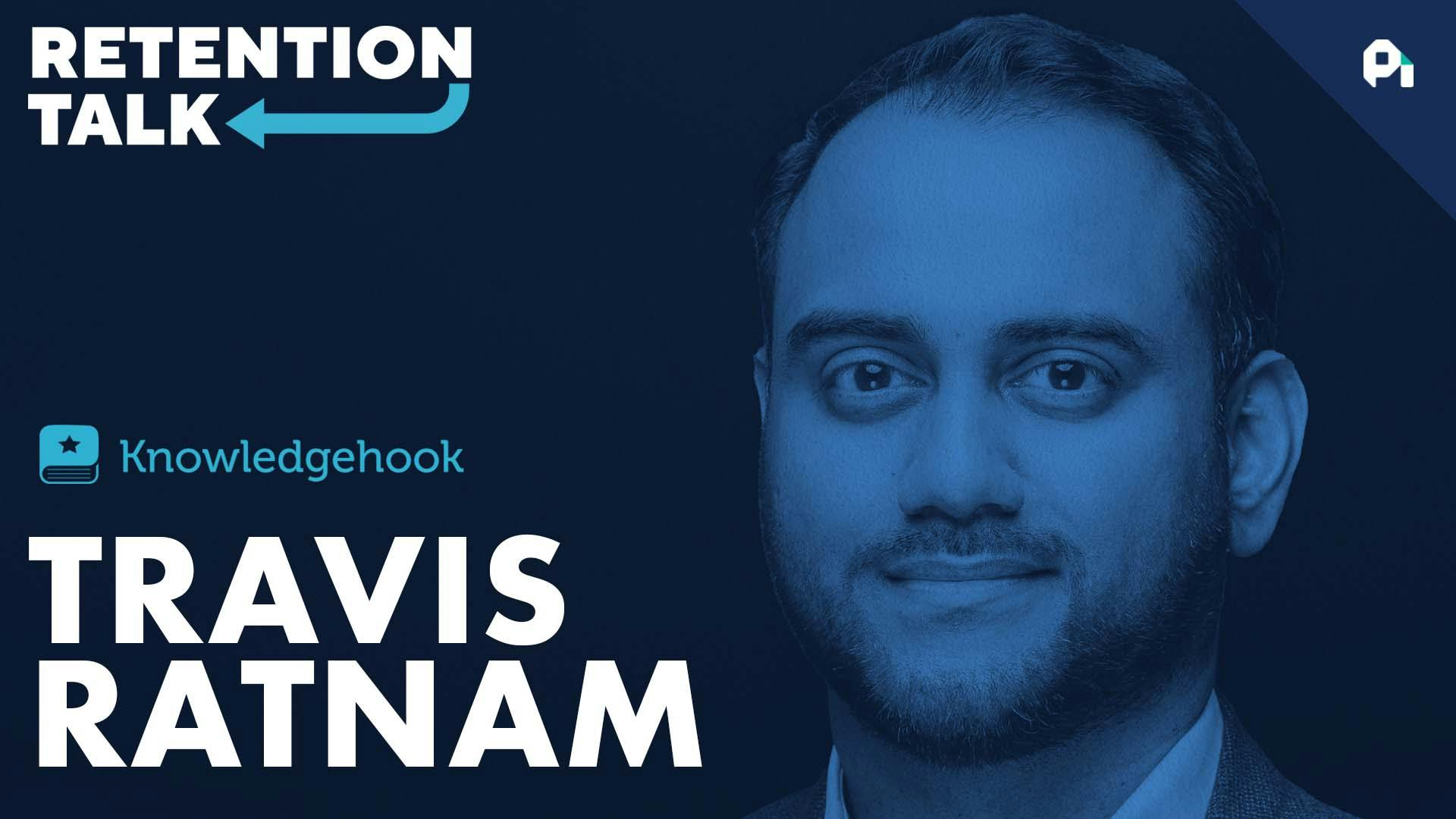
Onboarding, customer cohorts, and non-traditional CS | Knowledgehook's Travis Ratnam
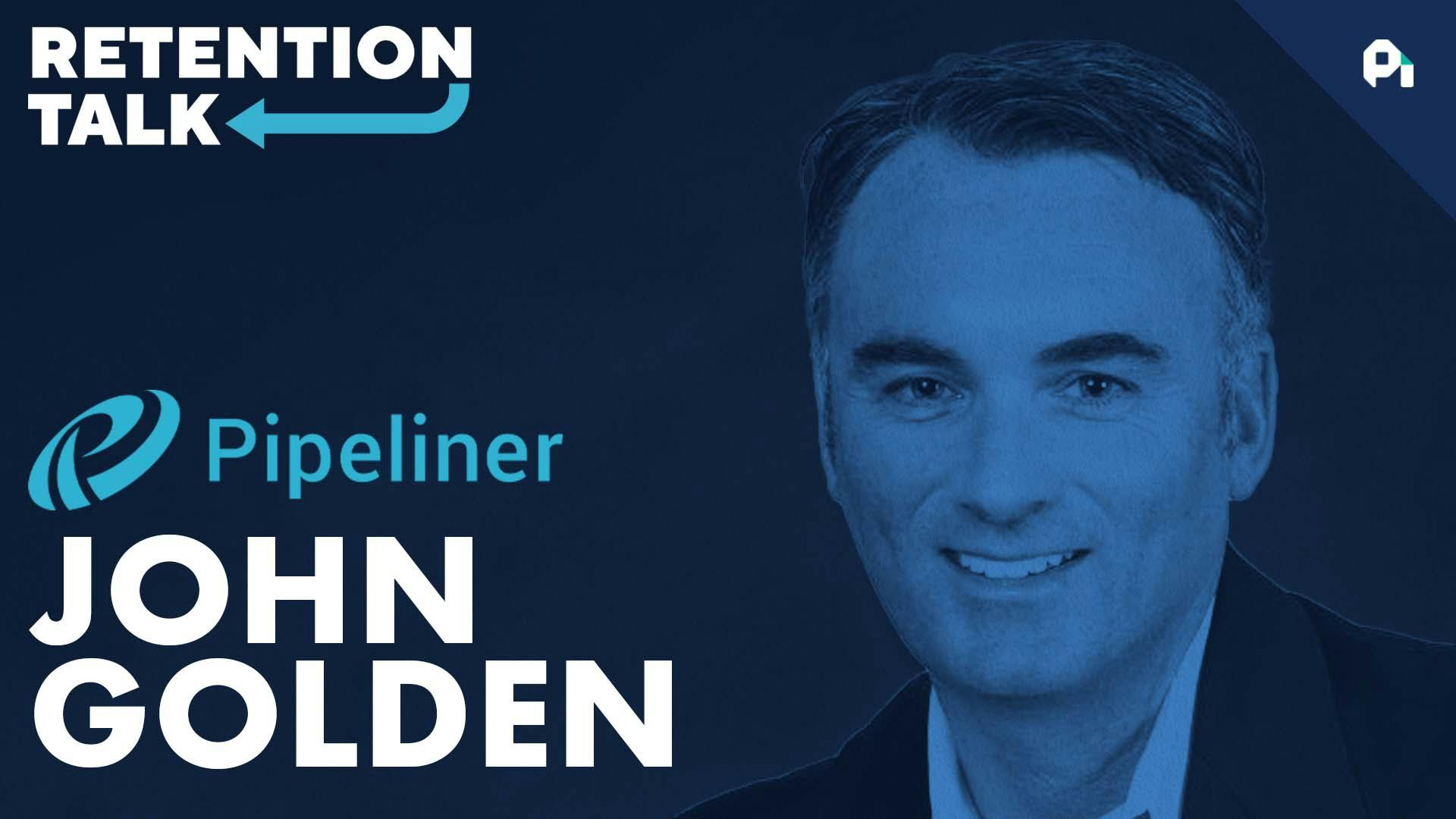
Expansion revenue, CX perpetuity, and maintaining focus | Pipeliner's John Golden
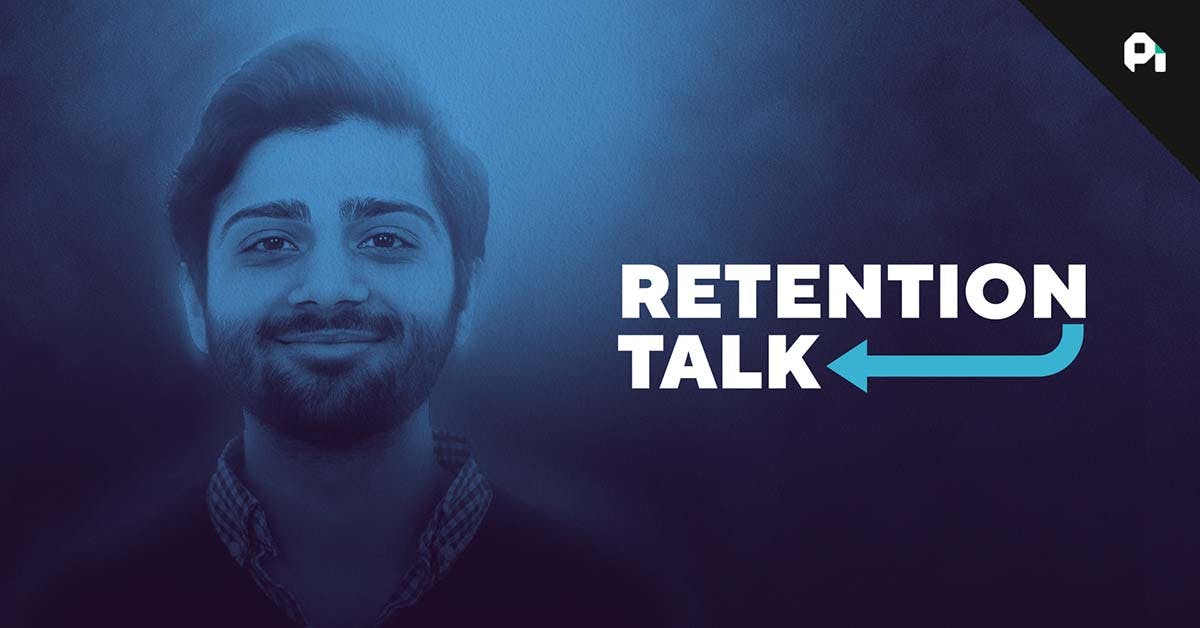
5 Key Strategies for User Retention
